Exchange: a conversation on painting with Cherith Lundin
In this installment of our artist-to-artist series of conversations on practice, Ruben Nusz and Cherith Lundin have a lively discussion about painting and illusion, mystery, and the artist's quixotic quest to stop time.
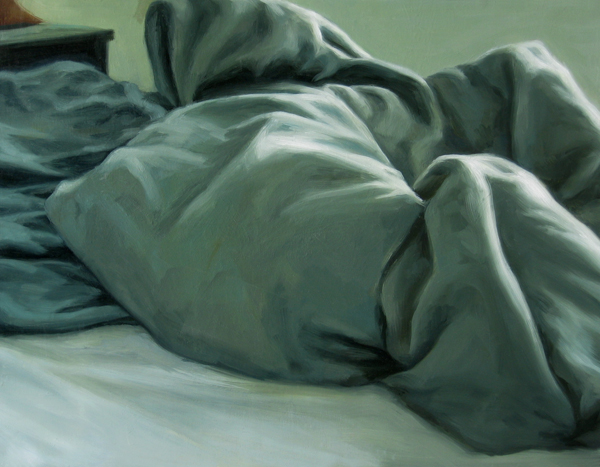
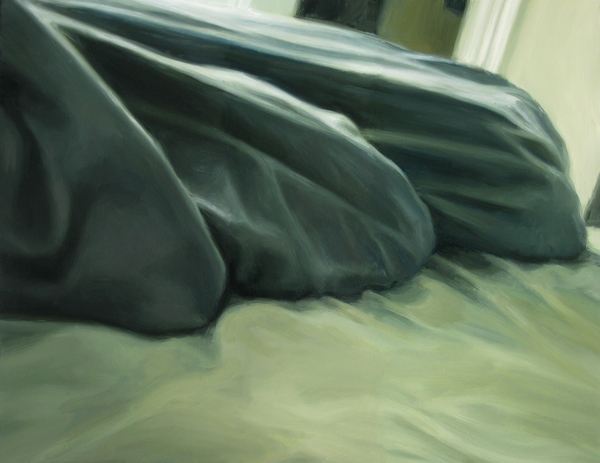
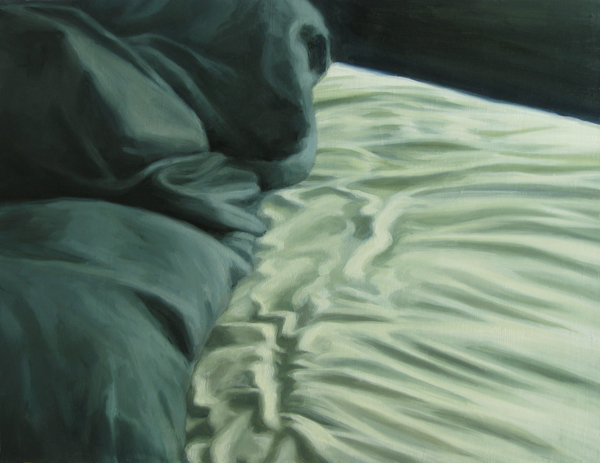
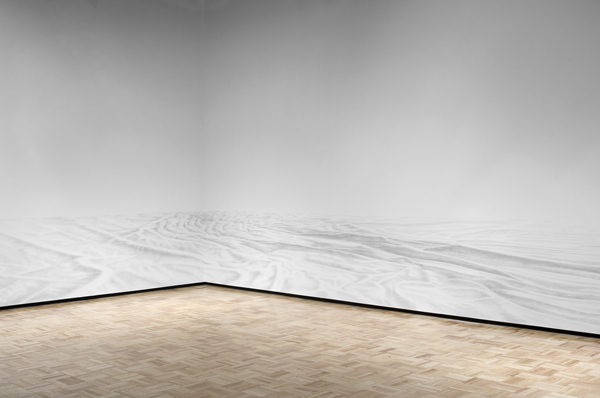
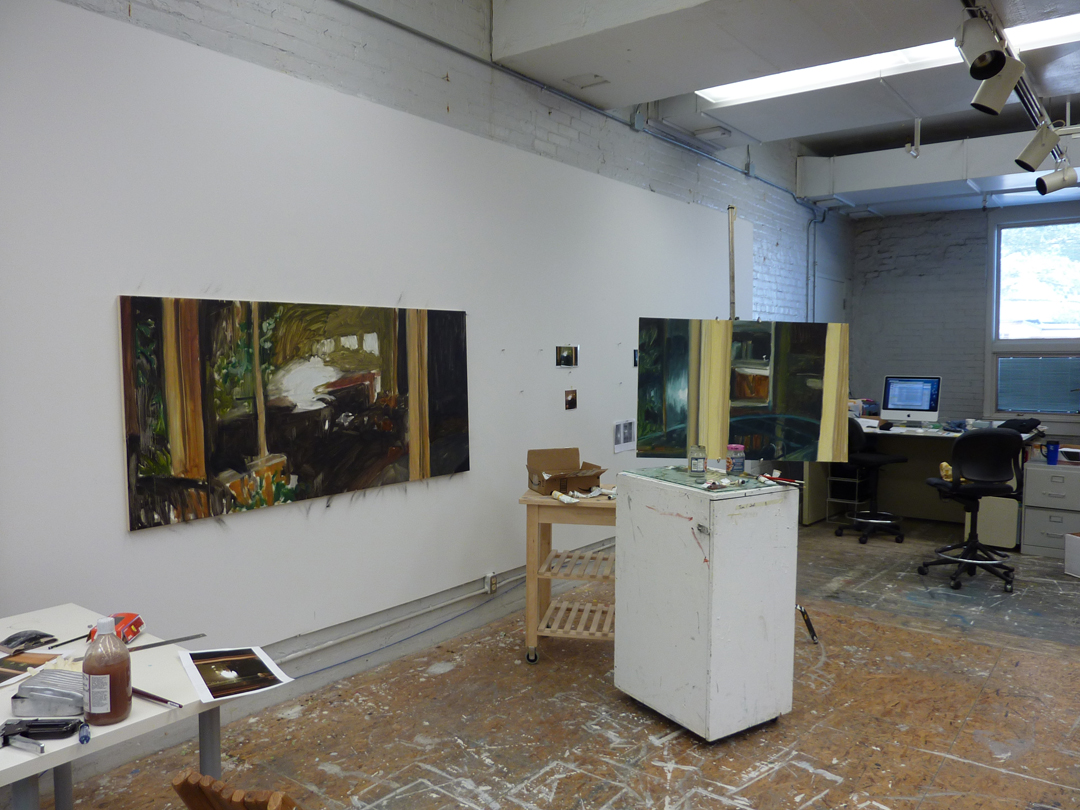
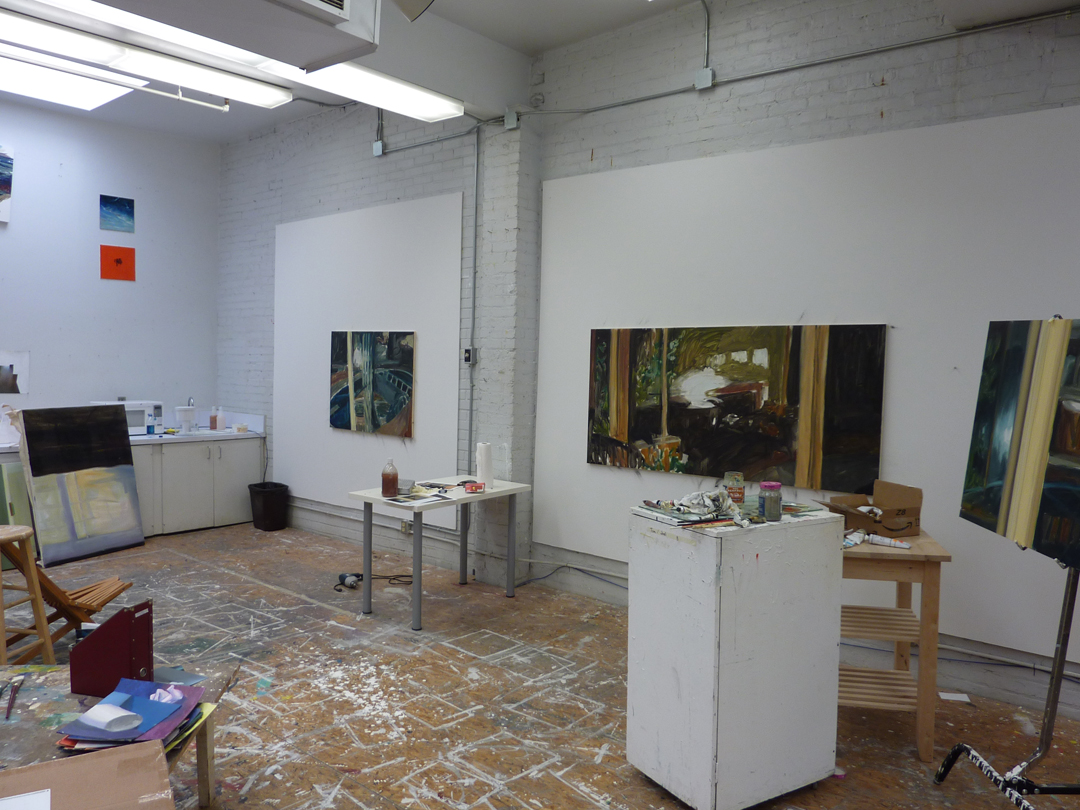
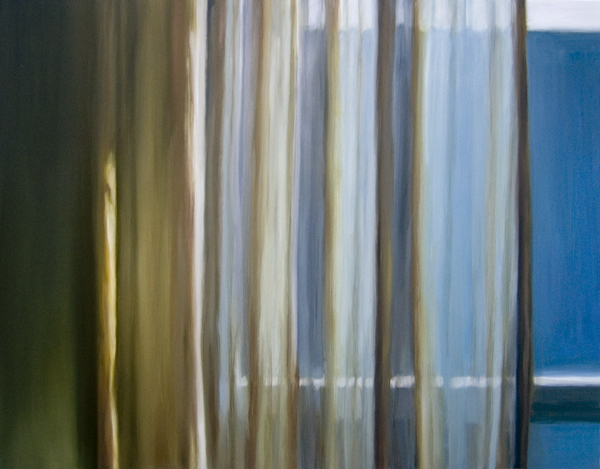

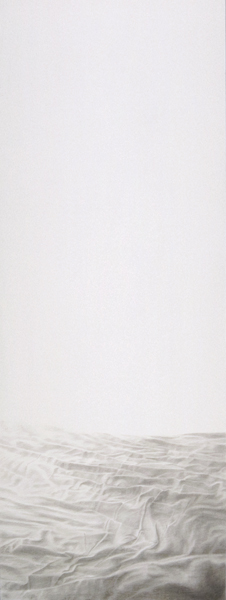
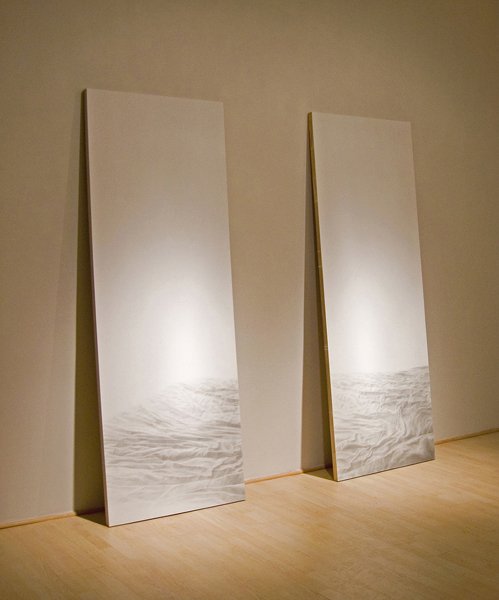
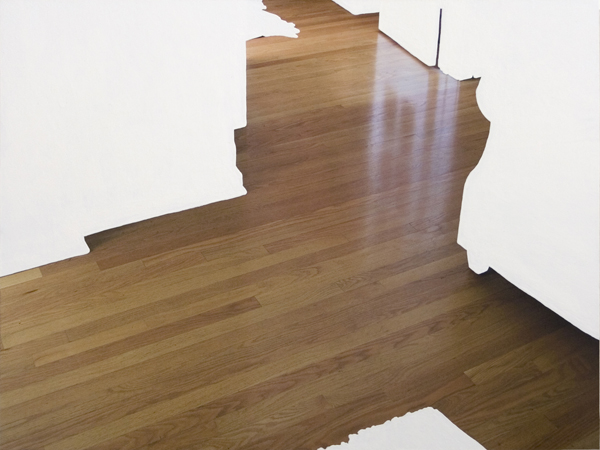
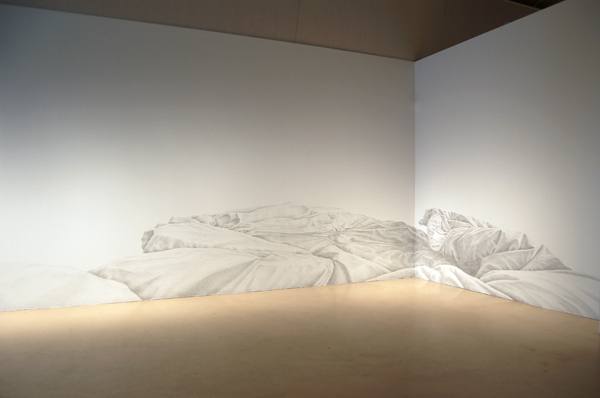

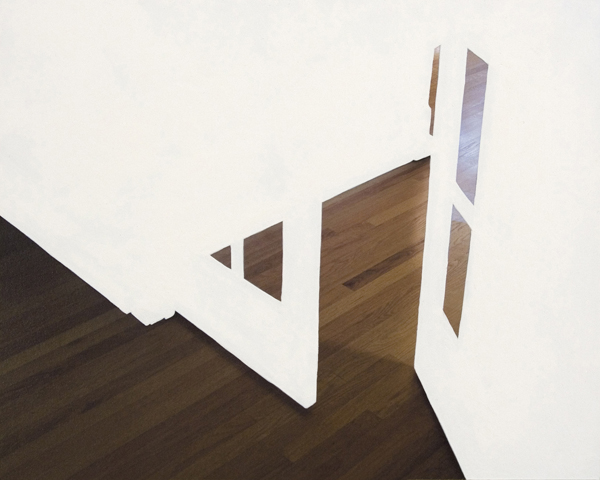
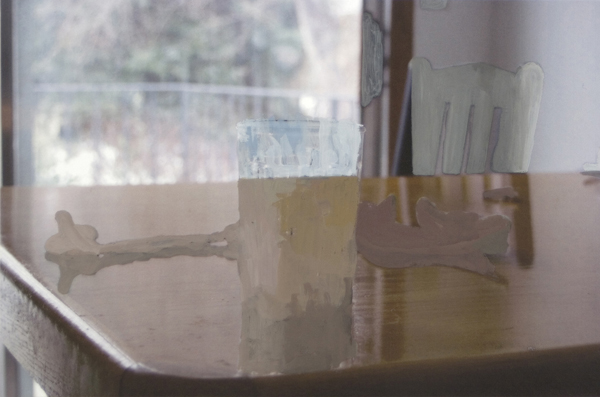
introductionMinnesota-born artist Cherith Lundin fuses subtle exploreations of the banal with a profound formal intelligence and a soft, aesthetically refined touch. Adjusting the scale of her pieces according to that of each installation site, Lundin’s practice involves multiple media formats, but her primary focus continues to be painting and drawing, employed as a means of exploring dualities like the known and the unknown, or realism and abstraction. In this iteration of Exchange, a series of artist-to-artist conversations about the daily practice of painting, Lundin and fellow painter Ruben Nusz discuss a range of topics related to the medium, including the gimmick of illusionist imagery, the essence of mystery in art, and the (im)possibility of stopping time.
ruBen nuszI’d like to begin by asking you to provide some background about your work. How would you describe what you do to those unfamiliar with your practice?
cherith lundinWell, my work is deeply rooted in observation, and the spaces my eyes tend to get caught in are those I return to most — the spaces I inhabit. I guess I use my studio practice as a way of grounding myself. I’ve moved a lot in my life — the biggest move being between Germany, where I spent most of my growing up, and the US — so I’ve had a lot of different places and spaces to respond to. While the work I’ve done has taken different forms, from drawing and painting to mixed media and installation work, it all comes from a very similar impulse — seeing and responding.
rnI like this idea of the studio as home base, even if location of the studio shifts. It reminds me of this Jimi Hendrix quote where a woman leaves him and he says, “But that’s alright, I’ve still got my guitar.” In your artist’s statement you talk about this idea of ‘seeing things from new angles’ and about viewers doing the same. Could you describe, concretely, how this benefits us as human beings?
clI think it’s why we read stories; to see the world from new or other perspectives fundamentally enlarges our own perspective and our experience of the world. I’m interested in the moments when we are confronted with something other than what we would expect in things that are really banal or everyday, the same things our habit usually is to pass over.
rnLets say, hypothetically, that one starts seeing the world in a way that is less flippant. Might that make us, say, more kind or empathetic?
clWe’d like to hope that, wouldn’t we? But maybe that is dictating too much for the viewer…
rnHow much can be dictated to the viewer? Art, in some sense, is about proposition, about artists proposing a way of looking at the world to someone other than themselves. There’s a question in there somewhere.
clI like the word ‘proposing’, or ‘proposals’. Maybe another angle on the question has to do with the experiential nature of a piece of art. Along with ‘new angles’, another aspect of my work that is important to me is its immediacy — the difference between stepping close to view an intimately scaled drawing and being engulfed in a drawing that has taken over the walls. I think there is also a trust factor there — as an artist, most of what I do starts in questions, like “What happens if…?” So, I trust that my questions might add something to someone else’s experience of the world as well.
rnYou’ve mentioned that you aim for “the walls to disappear in your work;” that happens in the installations, but also in the smaller works. I like this notion of forms grounding us as human beings living in a world where the walls are always changing. You paint realistically, but, at the same time, your work aspires towards further abstraction, even non-objectivity, where walls dissolve into straight forms. Your new gesso and wood paneling pieces, in particular, flirt with this.
clThere’s always been this tension between representation and abstraction that pulls me. The one won’t let the other move too far away. Tied to this is not only notions of realism and abstraction, but also of the objective/analytical and the subjective. What interests me in the gesso and wood pieces, on the one hand, is a play with figure/ground and presence/absence with the meeting of gesso and image, built up paint and photographic illusion; but I’m also interested in the play of a fairly analytical take on a subjective experience of a place. Instead of painting a floor plan from above, the images are made up of the momentary constellations of people and things in space — a momentary monumentality.
rnI love that! I’ve always thought that you achieved the monumental in your small paintings, like Morandi. In continuing with this representation/abstraction dialectic, I feel as if I’m very attached to illusory space in painting. I wonder whether this is an attachment to some skill level, or if there’s something compelling about the process of creating the illusions of three dimensions on the two-dimensional picture plane?
clI’m a sucker for it. Even within completely non-objective painting, those moments where paint overlaps paint and opens up an inkling of space — beautiful. It’s so much of what painting can do.
rnSometimes, it can be too easy though, like a parlor trick. How is illusory imagery (even in non-objective work) more than a gimmick? I feel guilty sometimes using it, like I’m trying to mislead viewers.
clFor me, in order for its use not to be easy, not to be simply illustrative, it has to give on both levels — as paint, as well as illusion. I want to actually be given something to see, as well as what to see- — if that makes any sense. I’ve got a lot of abandoned paintings sitting around that are working fine as pictures of something, and where, going back a couple years later, I wonder why I didn’t finish them. But I just couldn’t get them to be more than the picture. To get something to become present is a real achievement. What do you think the guilty pleasures of other media are — are we simply being too self-conscious about paintings?
rnI think I’m hard on painting, especially, because it seems so inefficient and antiquated, and because it seems the art world, at large, is so critical of it.
clIt is inefficient. But isn’t that what it is?
rnYes. I know. And, actually, it can be very efficient. Look what an artist like Pieter Claesz can do with one little stroke.
clSee, you don’t get to drool as much over other art forms…
rnRichter once said, “The pleasure of painting proves the necessity of it.” Maybe that’s where my guilt is coming from, from the fact that I enjoy it so much — I don’t know. But do we drool because we’re painters? Are we just doing this for other people out there, like us?
clGoing back to what you said earlier, about forms grounding us as human beings — I do believe materials and processes matter. That’s where so much of the mystery lies. Something made through the accrual of time and materials, such as a painting, is so different from something captured by a camera, or from a mark made on the wall. And those differences are exciting.
rnYes, yes. You bring up a great word: mystery. Your work definitely evokes that for me – it doesn’t give you everything. Could you talk about this?
clWell, I’ve got a good dose of Scandinavian reserve. Even though there’s a stillness and calm in much of my work, I’m interested in tension. We talked about the tension between representation and abstraction, but maybe this goes back to the use of illusion, too — I’m interested in the ability of art to simultaneously draw the viewer near and to push her away, to be both/and, not necessarily either/or…
rnThere’s a push and pull, not just in the Hans Hoffman-color sense, but in other ways, in the “should I stay or go” qualities of some of your bed-sheet pieces. Where does narrative fit in this context? When I’m looking at these bed-sheets, it reminds me of Edward Hopper, in a way. Or, of this Francis Bacon quote “…The greatest art always returns you to the vulnerability of the human situation.” How does one create work that reveals vulnerability?
clI’m a huge reader of stories, but in my work I’m more interested in offering up space for narrative rather than anything overt to fill it — I want to leave the narrative space open to the viewer. I suppose, in regards to vulnerability, the itch I keep scratching has to do with an attempt to hold on to time passing.
rnMaybe that’s the subtextual goal of a lot of painters and photographers. To do the impossible, hold on to time passing.
clI don’t know that you can set out to do this, or that I’ve ever achieved it, but maybe, with its long history, our fascination with painting has to do with the fact that, at times, it’s succeeded in capturing that human vulnerability you were talking about — be it Rembrandt or Morandi.
rnIf we’re trying to hold on to passing time, to do the impossible, how do we keep going? How do we keep visiting the studio, day in and day out, knowing we’ll never really be able to stop time?
clMaybe that needs to be rephrased — maybe it’s more about the mystery, the idea that we can, in some sense, hold on to time through words, memory, or artistic action. But maybe we’re digging ourselves a hole, here…
rnThat’s so optimistic! Maybe we can hold on to time. It’s possible that painting, in some ways, allows that. One final question: the arts writer Peter Schjeldahl once asked a question that I’ll pose to you, “A situation of the art world: given that a painting is good, does it matter?”
clIt sure does.
About the artist: CHERITH LUNDIN grew up in Germany and received a bachelor’s degree from Wheaton College (1996) and an M.F.A degree from the Minneapolis College of Art and Design (2000). She has exhibited her work extensively in the Midwest, New England, and Germany, including at the Minnesota Museum of American Art and the Fitchburg Art Museum in Massachusetts, and is represented by Thomas Barry Fine Arts in Minneapolis. She received a MCAD/Jerome Foundation Fellowship for Emerging Artists in 2006, and most recently, a grant from the Indiana Arts Commission. For more information and to see images of her work, go to www.cherithlundin.com.
About the interviewer: Originally from South Dakota, Minnesota artist RUBEN NUSZ was raised by cowboys and later graduated Summa Cum Laude from the University of Minnesota. In 2003 Nusz directed a feature-length documentary that toured the festival circuit. He has exhibited mixed-media works at the Minnesota Museum of American Art, Rochester Art Center, Art of This Gallery, Umber Studios, and the Hopkins Center for the Arts. He is also co-founder and editor of Location Books, a bimonthly series of limited edition artists’ books highlighting unseen, idea-based artworks in all forms of media. Essentially a gallery between two hard covers, Location focuses on unmediated, original, book-form “installations” and curated group exhibitions in print.